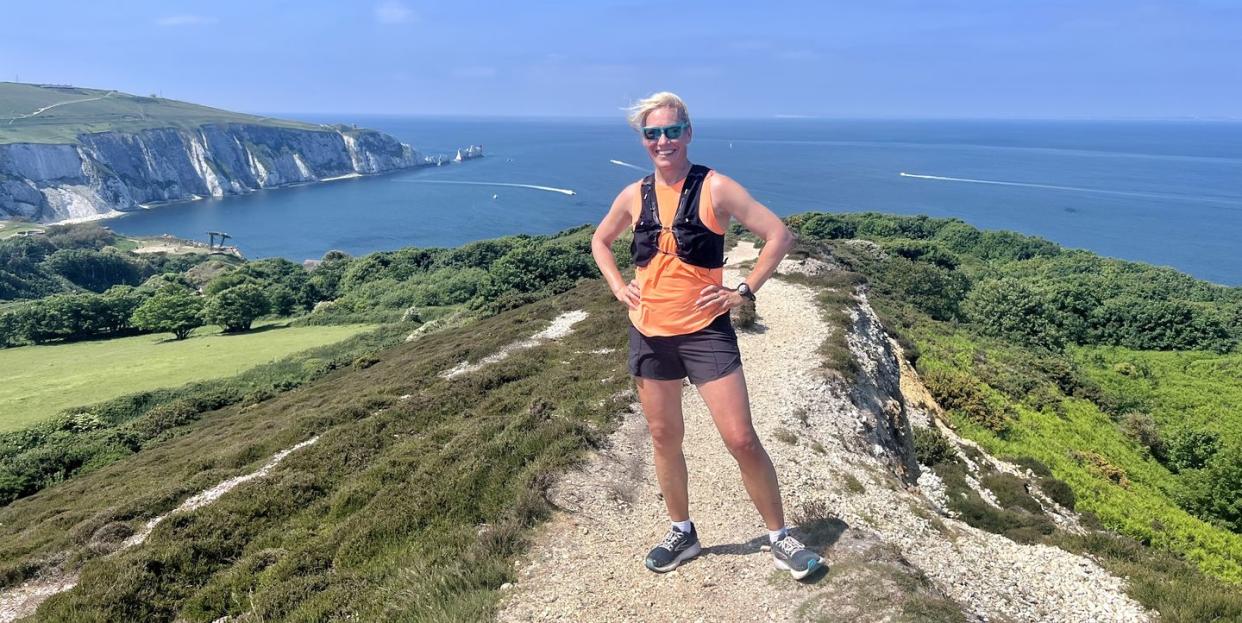Raworth on the Run: 'Training for the mountains is a steep learning curve'

I live in a city. A pretty flat city. I run marathons and train along straight river paths. Yet, for some unknown reason, I have signed up for not one but four mountain runs over the next six months, including two in the Alps.
I tried this once before. My debut in mountain racing was in 2022 at the Ultra-Trail du Mont-Blanc’s ‘baby’ race in Chamonix. It’s called the OCC. I call it the baby because compared with the main 106-mile event, it’s short at a mere 36. But it still involves crossing three mountains, with huge amounts of climbing. And it took almost 12 hours to complete. The excruciating pain of going downhill took me by surprise – by the end, every step killed my quads and knees. My training ground had been the Isle of Wight on what I thought were steep climbs. But when I got to the Alps and peered up at the almost vertical winding mountain paths, I realised I hadn’t done nearly enough preparation.
So, this time, I’m turning to the experts to find out how a city runner can be more comfortable at Alpine heights. Elsey Davis is an elite marathon road runner turned champion mountain goat. Her first mountain race was the 35K Eiger in Switzerland. She won it. She also took on the 115km Nice Côte d’Azur by UTMB in France last year. She won that, too. After a series of stress fractures, lockdown led her to switch from tarmac to trails. Is it possible, I ask her, for someone like me to train for a mountain race? ‘As long as you’re not trying to win,’ she laughs,‘it’s definitely doable.’ The key, she says, is a combination of endurance and having a robust body on the day. ‘Training in the mountains is the best way to achieve that. But if you can’t, there are other ways. The gym is less fun, but it gets the key muscles you’ll need going, particularly your quads, hamstrings, glutes and calves. They’re the ones you’ll rely on to withstand those steep mountain descents. Even in a city, you must find one good steep hill to train on.’
Finding hills is not a problem for Elsey: she lives on the coastal path in Cornwall. About three or four weeks before a big mountain race, she’ll do one big session, hammering up and down a steep path repeatedly, almost beating up her muscles, creating micro tears that’ll repair and prime the muscles in time for what is ahead. I tell her I’m running the London Marathon as fast as I can three weeks before a 50K mountain race
in Snowdonia. ‘Will it be doable?’ I ask a little nervously. Silence. A long pause. ‘I’m not even sure I could do that,’ she laughs, ‘though if you’ve done the London Marathon, you’ll have huge amounts of endurance in your legs. Don’t go out too hard and keep it steady. Mind you, it’s really steep and technical. You won’t be able to move that fast anyway!’
Nutrition is Elsey’s other big tip. Giving your body enough fuel will keep it moving forwards. Poles are a great idea, too. ‘They can be a life saver for your legs [if you] don’t have access to mountains for training. Poles give you four points of contact with the ground, so the load is distributed more. Even if you save just 1% of energy, that builds up over the race.’
The idea of running at altitude when you’re used to flat paths can feel overwhelming. But, in the end, Elsey says, it’s all just running – and if you’ve fuelled well and are robust and strong, ‘your body will just keep going forwards’. Good advice.
You Might Also Like


